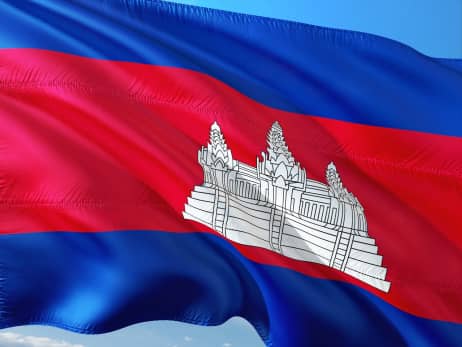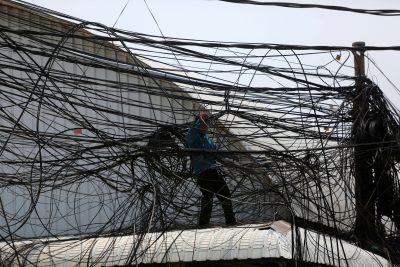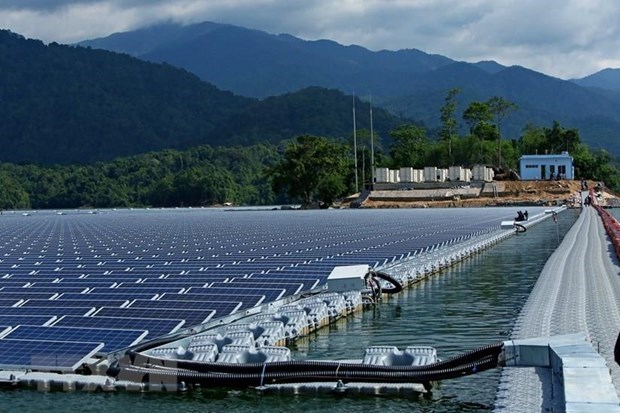- Others
–
- Cambodia
Is it finally coming to an end? For almost a decade, Phnom Penh’s City Hall and the Cambodian government have issued almost annual rebukes of the services provided by Cintri, a private-firm that in September 2002 was given an exclusive 47-year contract to manage trash collection in Phnom Penh. Each day, Phnom Penh produces about 3,000 tonnes of rubbish – 600 tonnes of which is plastic waste – yet Cintri has become something between a laughing stock and a bête noire of the capital’s residents. Former Phnom Penh governor Kep Chuktema once threatened to dump the city’s trash outside of Cintri’s headquarters if the firm didn’t improve its operations.
On Tuesday, however, Prime Minister Hun Sen announced that he had instructed the Ministry of Economy and Finance and Phnom Penh City Hall to buy out and manage Cintri. “We must acquire Cintri and all its equipment and City Hall can manage it. After the acquisition, we will manage all Cintri’s staff.”
After that, the plan is to divide the capital into four zones and then tender out contracts to four separate companies, which will each be responsible for one zone. Beyond that, the government will soon open four new landfill sites it has built at Kean Svay and Ang Snoul districts, while it also pledged to subsidize any private-sector investment in waste-to-energy sector, as long as it is local waste.
This should be rightly applauded. Cambodia, especially the capital, has long had a problem with waste. Some 35.7 percent of Phnom Penh’s poorer communities receive no waste management, according to one recent report. And much of it is to do with Cintri’s poor performance. In February 2015, the Council of Ministers, the cabinet, criticized Cintri in an open letter. “We believe and agree that Cintri lacks the ability to strengthen or extend its garbage collection and transportation operation in accordance with Phnom Penh’s expansion, even after it was given one year to improve,” it stated.
Head out in Phnom Penh at night and you’ll pity the Citri workers – who usually work at nights, so as not to further congest already congested streets. Few wear gloves or masks, despite the stench that even forces SUVs to make a wide swerve around their trucks. And all this for $159 per month.
Enjoying this article? Click here to subscribe for full access. Just $5 a month.
“Cintri provides only a green company shirt to its employees despite them regularly handling dangerous materials like glass, needles, and improperly disposed of wastes – such as sulfuric acid from batteries,” reads a report, Urban Governance Waste Management in Phnom Penh, published in January 2019, by Sahmakum Teang Tnaut, an urban NGO.
The report also revealed that 14 Cintri workers have been killed because of job-related accidents since 2015, and 380 incidents of injury since 2016, yet “family members scared to speak out about issues and no protective clothing or safety measures provided to workers in the wake of these deaths.” “CINTRI is failing its legal obligations to guarantee the safety of its workers as it is not supplying safety materials, such as protective work clothing or adequately mitigating the risks of a dangerous workplace,” the report asserted.
Enough of the applause, though. The government must provide some answers to the public. Why, given that Cintri’s services have been a laughing stock for so many years, has it taken this long for any action to be taken? The government is clearly now taking waste management seriously, since the Prime Minister waded into the issue. Yet, if, as he said, the authorities thought Cintri was performing so awfully that it needed to be nationalized, was there not the possibility to punishing or fining them first, rather than simply paying them off for poor performance?
“Letting Cintri continue [the service] is impossible. However, to avoid [the impact of] the loss of the company, the state has to spend [to make up for] it… The state must take over the company’s [responsibilities and replace the] workers and materials,” the Phnom Penh Post has him saying. Granted, in this economic climate the government doesn’t want to be seen as unfairly nationalizing private firms. But on the other hand, the message it’s sending is that a contracted company can perform terribly for years but, in the end, the government will simply buy you out. Cintri hasn’t really lost out here. The only losers have been the Cambodian people – and for far too long.
After this acquisition and before the new tendering round, there needs to be reforms. First, it no longer makes sense for a state-run electricity company to collect fees on behalf of a private rubbish-collecting firm, especially when many households are not paying the fees, and when some are paying but aren’t receiving a service. A monthly $1 fee is added to household electricity bills by Electricite du Cambodge (EdC) that goes towards household garbage collection cost. AEC News reports that fee collection is as low as 60 percent for households, and 15 percent for businesses. In 2017, the City Hall spokesperson Meas Pheakdey reportedly said it is “within the rights of citizens not to pay for services they do not deem acceptable, and it is not the government’s concern if the company is not paid.”
The government or City Hall might also consider coughing up some regular funds for trash-collection. Ensuring citizens of its capital don’t have to live in streets infested with rubbish won’t motivate the authorities, but if they consider it an investment (think of all the tourists who won’t leave with the memory of wading through flooded streets need deep in god know what) then it would be worth it.
Second, there needs to be more clarity when negotiating the new tenders. One of the main problems with Cintri was the fact that its contract was so opaque that there was an almost constant back and forth between it and City Hall over responsibilities. In 2016, Cintri called on City Hall to help it collected between $10 million and $20 million in unpaid fees, some of which dates back to the early 2000s. “According to the agreement, the company will collect, transport and clean, while the authority has the responsibility to encourage people to pay the fee,” Cintri manager, Ith Chen
Lastly, Cintri must be investigated for allegations of past misconduct. Sahmakum Teang Tnaut, in January, called for an “official investigation [led] by the Labor Inspectors and Labor Controllers and the Department of Labor Inspection” into Cintri’s safety standards, especially for workers. One feels there must also be some sort of enquiry (ideally public) into why the government and City Hall allowed the Cintri contract to run so long despite so many problems over the last decade.
However, this will be slightly complicated if the state will now be taking it over. Just as complicated (until more information arises) is whether the government wants to maintain a state-run entity when the tenders are auctioned. Speaking of tenders for the new four zones, Hun Sen said: “We will arrange for bids, which will include Cintri. Each company will be allowed to operate in only one zone.” It is unclear if he was referring to the Cintri, as a private-entity, or the soon-to-be nationalized entity. If the latter, it would certainly complicate the tendering process in a country ranked as one of the most corrupt in the world.
















